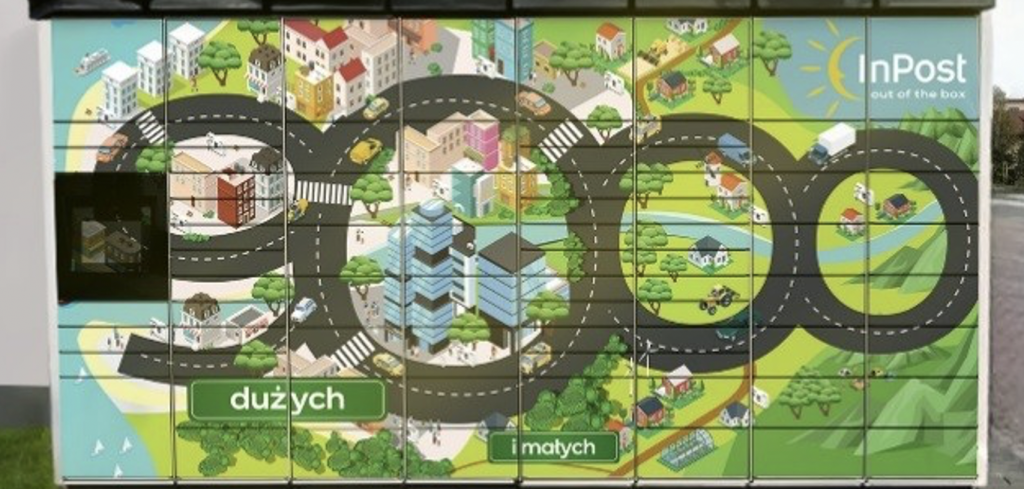Parcel volumes are growing at a tremendous rate in Poland – and out-of-home delivery options are crucial to increasing last-mile capacity. Here, Last Mile Experts’ Marek Różycki provides analysis on new research in this area
The Polish CEP sector is one of the fastest growing and most interesting in Europe today. From 2016 to 2019, the number of parcels grew by approximately 17% on average per year. This year, Last Mile Experts expects more than 710 million shipments in Poland – equating to about 22% more parcels than last year.
The CEP industry is driven by very dynamic growth in e-commerce, which in turn is now further strengthened by restrictions in retail caused by Covid-19. Out-of-home (OOH) delivery, including pick-up and drop-off points (PUDO) and automatic parcel machines (APM), is playing an increasingly important role. Deliveries to these points accounted for approximately 26% of all deliveries in the CEP industry last year in Poland, and this year we estimate that OOH delivery will account for about 33% of total B2C and B2B deliveries.
Last Mile Experts has just completed a survey entitled Out-of-home delivery in Europe, which shows that since June 2019 the number of PUDO points in the European Union has grown by about 40%. Currently, there are about 330,000 of them. Poland is one of the fastest growing markets, with the number of PUDO points increasing by over 70% during that time. The largest number of PUDOs in Europe is in Germany (56,000). France (47,000), Italy (36,000) and Great Britain (35,000) are the next largest.
In Poland, there are 28,000 unique PUDO points. The sum of all PUDO points in Poland (see Table 1, below) seems to be higher, but it should be remembered that Żabka points are used by Poczta Polska and DHL Parcel at the same time, while Poczta Polska uses some of the RUCH newsagent points, so there is a risk of double counting.
The number of parcel machines is growing even more dynamically. In Europe, there are now almost 40,000. Poland has the most – more than 9,200. Since June, this number has increased by an astounding 100%.
| Operator | PUDO | APM |
| Poczta Polska | 13,600 | 240 |
| InPost | 1,730 | 9,000+ |
| DHL Parcel | 9,830 | 170 |
| RUCH | 4,180 | |
| DPD | 2,860 | 170 |
| GLS | 1,300 | |
| UPS | 1,530 | |
| FedEx | 600 |
Table 1: Number of PUDO points and parcel machines of CEP operators in Poland (as of November 12, 2020)
Our experience shows that customers are now more and more demanding in terms of deliveries. They want transparency, flexibility and greater influence on their delivery logistics. Customers are even able to opt out of a purchase if the delivery option they want is not available. Considering this and the fact that we currently have a huge increase in CEP industry (B2C) volumes, offering OOH deliveries is a must. Thanks to OOH delivery options, CEP operators are able to achieve capacity, efficiency and meet customer experience.
Commentary
Deliveries to PUDO and parcel machines have many advantages over door-to-door deliveries. Almost 100% of OOH deliveries are made the first time. Where the prerequisite density exists, they are close to the customer and are convenient, because we can pick up the package on our way or, if not, the access point is very close to our home.
“The popularity of the OOH service is growing year by year, which is why operators are constantly expanding their network of points,” says Dr Arkadiusz Kawa, director of Łukasiewicz – Institute of Logistics and Warehousing. “LME’s research shows that online retailers and logistics service providers should pay more attention to this delivery channel.”
“In Finland, OOH is currently the standard delivery model – the share of home delivery is quite small,” adds Arttu Hollmérus, senior VP of parcel and e-commerce at Finnish postal operator Posti. While its landmass is greater than Poland’s, Finland’s population is just 5.5 million compared with Poland’s population of almost 38 million.
“We will never need as many lockers here as in countries with much larger populations, but per capita we have one of the most dense locker networks on the planet,” Hollmérus continues. “Posti’s parcel lockers were first installed in Finland in 2011, and today lockers are the most preferred delivery option for Finns. The same applies in the Baltics, especially in Estonia where lockers are by far the most popular choice. By the end of 2020, Posti will have one locker per 2,600 people in Finland with 2,100 parcel lockers.”



 Marek Różycki is managing partner at Last Mile Experts, specializing in CEP and e-commerce last-mile advisory.
Marek Różycki is managing partner at Last Mile Experts, specializing in CEP and e-commerce last-mile advisory.